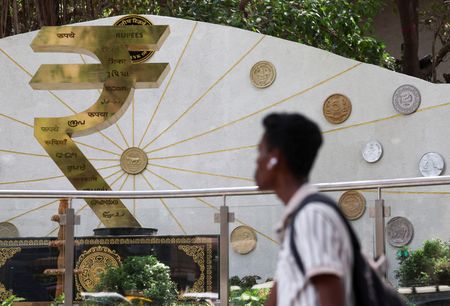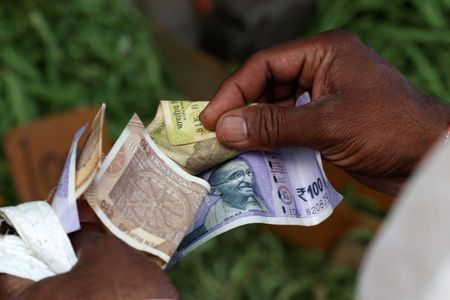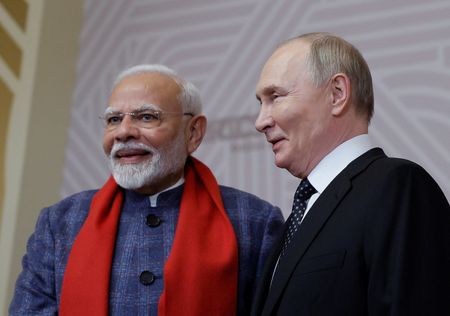By Nimesh Vora
MUMBAI, August 7 (Reuters) -The Reserve Bank of India has resumed intervention in the non-deliverable forwards market over the past fortnight to manage rupee volatility triggered by mounting trade tensions with the United States, four bankers told Reuters.
This marks a return to a tool the central bank had largely refrained from using over the past seven months since Sanjay Malhotra took over as RBI governor and dialled back on currency intervention.
The rupee has appeared increasingly vulnerable in recent weeks amid uncertainty over whether India will reach a trade deal with the U.S. The currency posted its largest weekly decline in nearly three years last Friday, weighed down by U.S. President Donald Trump’s decision to impose steeper-than-expected 25% tariffs on Indian goods.
The RBI stepped into the non-deliverable forward market last week, responding to the pressure on the currency, the bankers said.
The strain on the rupee has persisted this week following Trump’s warning of punitive action over India’s continued imports of Russian oil, which culminated in an additional 25% tariff on Indian goods.
The central bank may have stepped in this week too in the non-deliverable forward market, two out of the four bankers said.
The rupee dropped to a six month low of 87.8850 versus the U.S. dollar on Tuesday, coming within a whisker of its all-time low of 87.95 hit in February. It would have likely breached that level if not for the Reserve Bank of India’s intervention, traders said. As of 12:56 pm IST on Thursday, the currency was trading at 87.7275.
An email to the RBI seeking comment did not draw an immediate response. The bankers spoke on condition of anonymity because they are not permitted to speak to the media.
“The Trump tariff surprise and a possible all-time high (on dollar/rupee) brought the RBI back in NDF,” head of FX and rates trading at a foreign bank said, “They’re not going in heavy like previously, more of a light touch just to keep things in check.”
The RBI had largely stepped away from the non-deliverable forward market in recent months, significantly unwinding its positions, according to bankers.
Under Malhotra the RBI has allowed higher volatility in the rupee, marking a shift from the tightly managed approach of his predecessor Shaktikanta Das. During Das’s tenure, non-deliverable forwards had become RBI’s preferred mode of intervention.
Unlike onshore spot market operations, intervention through the non-deliverable forward market does not directly impact India’s foreign exchange reserves or affect rupee liquidity in the domestic banking system.
The RBI’s intervention in the non-deliverable forwards market last week was complemented by sustained action in the onshore spot market, which contributed to a more than $9 billion decline in India’s foreign exchange reserves.
“The RBI is likely to be more aggressive in capping INR depreciation pressures given how far the currency has already cheapened over recent months in spot, NEER (nominal effective exchange rate) and REER (real effective exchange rate) terms,” Singapore-based Mitul Kotecha, head of FX & EM Macro Strategy Asia at Barclays Bank, said in a note.
(Reporting by Nimesh Vora; Editing by Ronojoy Mazumdar)










